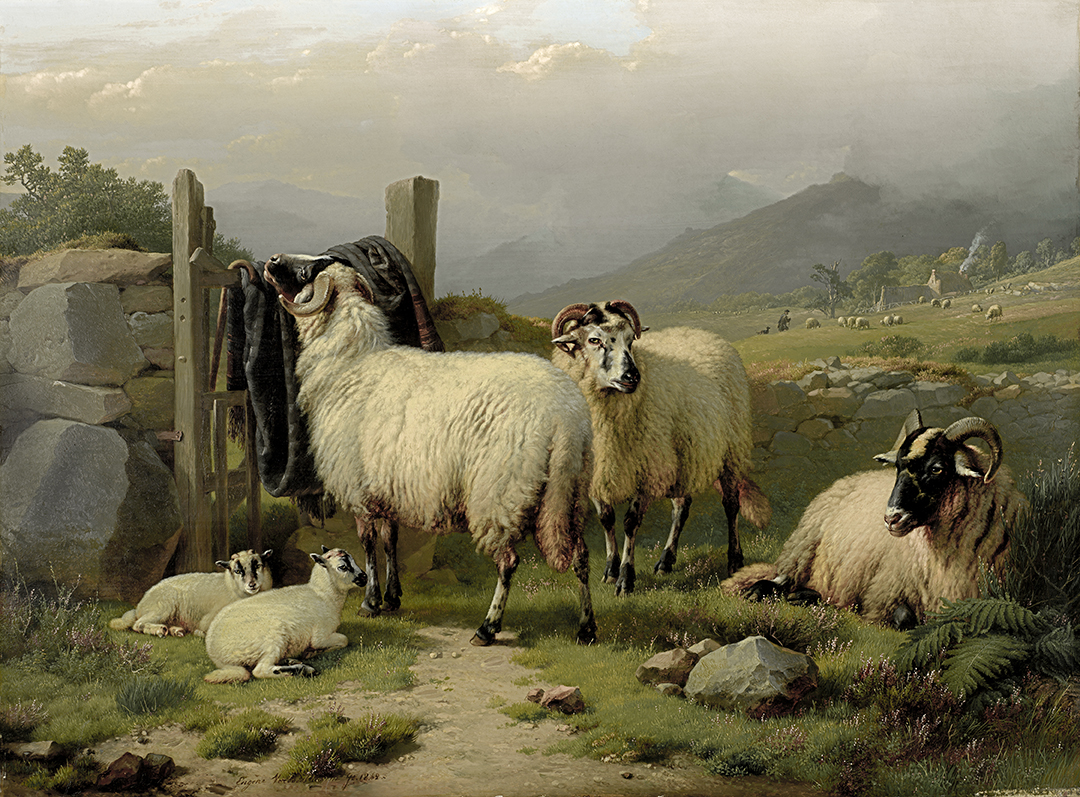Artist Bio
Eugène Verboeckhoven was known as “the Raphael of sheep”—an appellation that is surprising in a time when paintings of animals were common. Popular in Belgium from the 1820s onwards, he developed an international following.
Verboeckhoven’s father was a sculptor, and the young Eugène first trained at home in Ghent. As a young man, he learned to make lithographs. He entered the Antwerp studio of the animal painter Balthasar-Paul Ommeganck in 1818. Two years later, he made his debut at the Salon in Ghent.
King William I of the Netherlands commissioned an equestrian portrait from Verboeckhoven in 1822. This painting catapulted the young painter to popularity. Verboeckhoven moved to Brussels in 1828 and, two years later, when revolution erupted.
Like Rosa Bonheur (1822-1899) and Constant Troyon (1810-1865), Verboeckhoven gave his animals, and particularly his sheep, a sense of individuality. His creatures are not universal sheep; they are particular creatures.
Join the fun at Haggin Museum!
Sign up for our e-newsletter and stay-up-to-date on all the exciting exhibitions, events & more!

